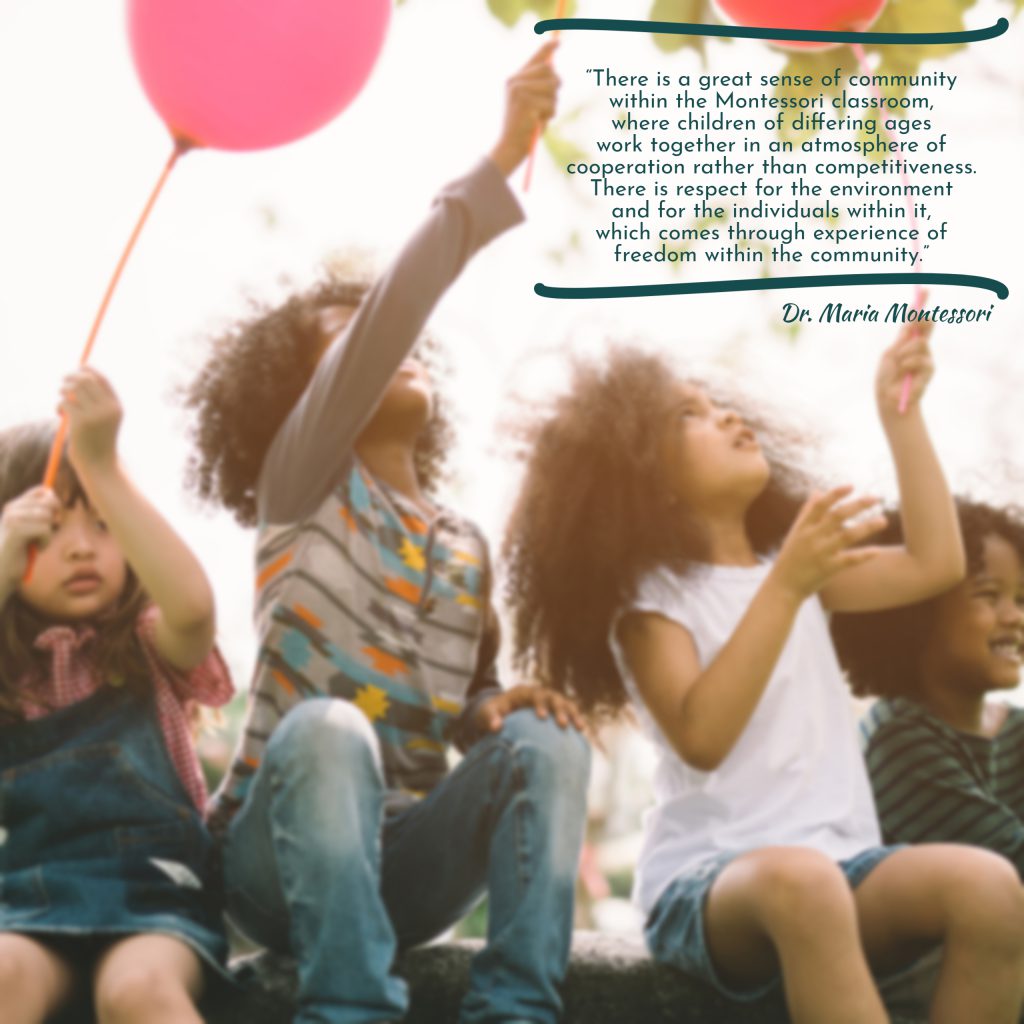Montessori and the Mixed-Age Classroom
April 18, 2022Infographic: Parenting Book Recommendations
January 23, 2023From the outset, community has been an essential component of the Montessori classroom. Do you know why Maria Montessori called her classes “Children’s Houses”? It was because she wanted her classes to not just be a place of learning, but to also be somewhere that children felt they belonged. Dr. Montessori understood that emotional development is linked to optimal learning, and she designed her method to support the development of emotional skills. Montessori teachers continue this today, fostering social and emotional development and stressing the importance of community in the classroom. Below, we’ll discuss the ways in which community is built in a Montessori classroom.

Building Community in the Montessori Classroom: Grace and Courtesy
The principles of grace and courtesy are some of the first lessons children receive when attending a Montessori school. They are, in fact, the foundation of a Montessori classroom and the community it creates. Grace is the ability to show respect and comfort to oneself, while courtesy is showing the same to others. Children are expected to be polite and kind to everyone in their community.
Teachers model this kindness and respect through both their actions (for example, greeting children warmly when they enter the class) and lessons specific to grace and courtesy. Children also learn about community and their role in it through their everyday experiences in the class. While the Montessori Method encourages freedom of movement and choice, this must occur within the framework of grace and courtesy. For example, a child may need to wait their turn for a lesson, which not only develops self-control, patience, and delayed gratification but also teaches children how their actions can help, hurt, or disturb others. They learn how individual freedoms must exist alongside other people, and they also learn about civic responsibility and how to contribute to society.
Building Community in the Montessori Classroom: Care of the Environment
Caring for the environment helps children connect to their classroom and creates a sense of responsibility for it. Children can care for their room in various ways–from sweeping up after lunch to watering plants to taking out the garbage. When children work together to care for and feel a responsibility toward their classroom, they build community and a sense of belonging. Helping to care for the classroom also teaches children about the needs of others and how they can help; for example, if a child doesn’t put away materials when they’re finished a lesson, another child may not be able to find those materials later. As another example, a child may take up the task of sorting and folding the school’s laundry and delivering that folded laundry to the other classrooms, which helps them feel like a contributing member of both their classroom and the wider school community.
Building Community in the Montessori Classroom: The Three Year Cycle
There’s another key component of the Montessori method that helps build community: the mixed-age classroom. In an authentic Montessori school, children will not be separated by age, but will be in classrooms with children of multiple ages. At the Montessori Center of Downriver, we have a toddler room (ages 18 months to 3 years) and a preschool/kindergarten room (ages 3-6 years). Because classes are not grouped by age, children complete what is called the “three-year-cycle,” meaning they are in the same classroom for three years. Being with the same teachers and classmates for these cycles helps form deep bonds and a strong sense of community. Children are encouraged to work together, and the idea of meeting the child where they are allows all children to be accommodated and accepted in the class–no one is separated or removed.
Community = Family
The Montessori Method provides children with many daily activities that build community. Simply preparing a snack and eating it together can make children feel like they are a part of a bigger whole. At the Montessori Center of Downriver, classrooms truly do become families. If you’d like a chance to see one of our rooms in action, please contact us to schedule a tour.